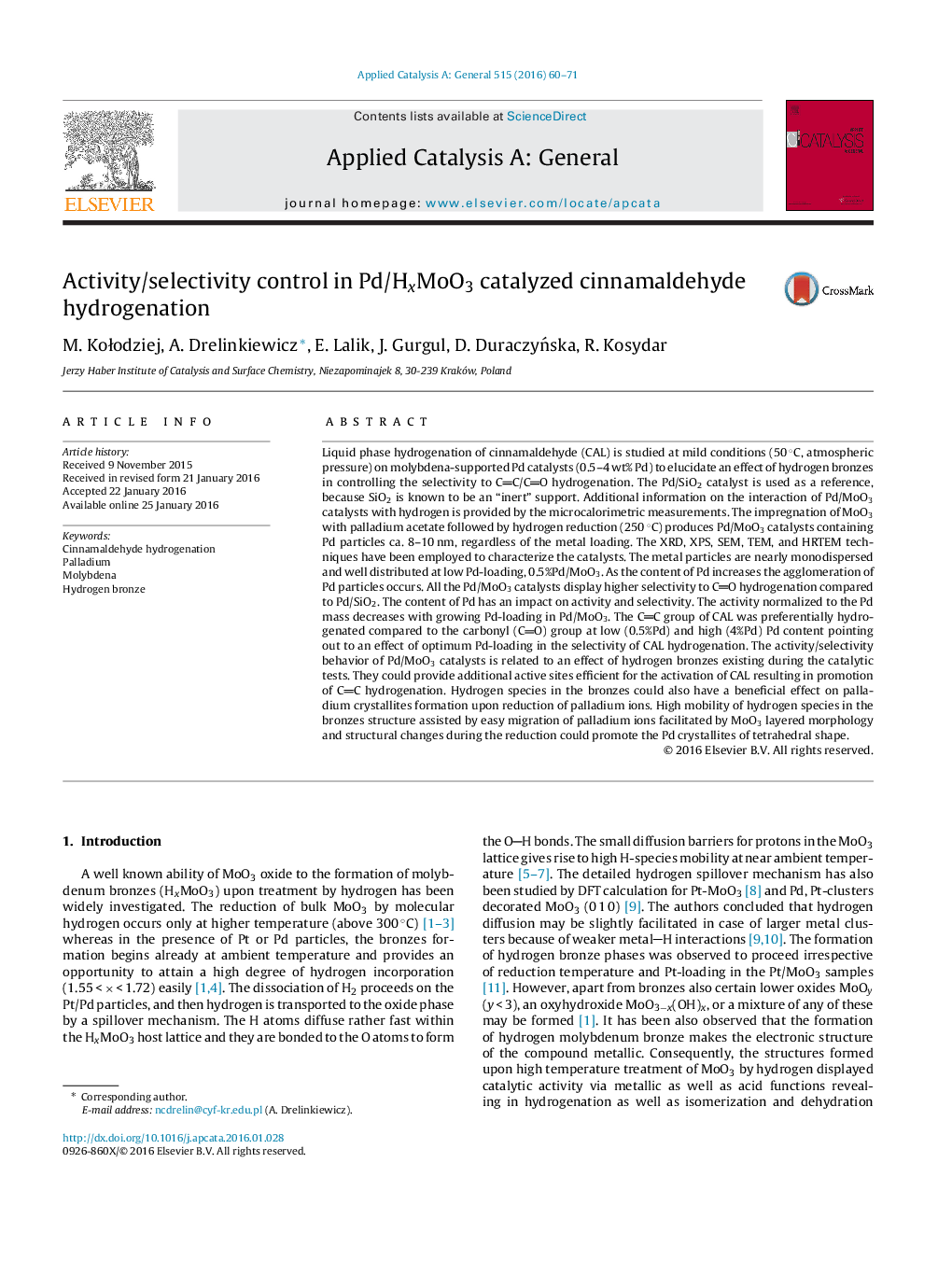| کد مقاله | کد نشریه | سال انتشار | مقاله انگلیسی | نسخه تمام متن |
|---|---|---|---|---|
| 38863 | 45794 | 2016 | 12 صفحه PDF | دانلود رایگان |

• Hydrogenation of cinnamaldehyde catalysed by Pd/MoO3 catalysts.
• Hydrogen bronzes and MoO3 influenced either activity and selectivity of hydrogenation.
• Interaction of hydrogen with MoO3 studied by microcalorimetric method.
• An optimum Pd-loading exists resulting in the best selectivity to aldehyde reduction.
Liquid phase hydrogenation of cinnamaldehyde (CAL) is studied at mild conditions (50 °C, atmospheric pressure) on molybdena-supported Pd catalysts (0.5–4 wt% Pd) to elucidate an effect of hydrogen bronzes in controlling the selectivity to CC/CO hydrogenation. The Pd/SiO2 catalyst is used as a reference, because SiO2 is known to be an “inert” support. Additional information on the interaction of Pd/MoO3 catalysts with hydrogen is provided by the microcalorimetric measurements. The impregnation of MoO3 with palladium acetate followed by hydrogen reduction (250 °C) produces Pd/MoO3 catalysts containing Pd particles ca. 8–10 nm, regardless of the metal loading. The XRD, XPS, SEM, TEM, and HRTEM techniques have been employed to characterize the catalysts. The metal particles are nearly monodispersed and well distributed at low Pd-loading, 0.5%Pd/MoO3. As the content of Pd increases the agglomeration of Pd particles occurs. All the Pd/MoO3 catalysts display higher selectivity to CO hydrogenation compared to Pd/SiO2. The content of Pd has an impact on activity and selectivity. The activity normalized to the Pd mass decreases with growing Pd-loading in Pd/MoO3. The CC group of CAL was preferentially hydrogenated compared to the carbonyl (CO) group at low (0.5%Pd) and high (4%Pd) Pd content pointing out to an effect of optimum Pd-loading in the selectivity of CAL hydrogenation. The activity/selectivity behavior of Pd/MoO3 catalysts is related to an effect of hydrogen bronzes existing during the catalytic tests. They could provide additional active sites efficient for the activation of CAL resulting in promotion of CC hydrogenation. Hydrogen species in the bronzes could also have a beneficial effect on palladium crystallites formation upon reduction of palladium ions. High mobility of hydrogen species in the bronzes structure assisted by easy migration of palladium ions facilitated by MoO3 layered morphology and structural changes during the reduction could promote the Pd crystallites of tetrahedral shape.
Figure optionsDownload high-quality image (165 K)Download as PowerPoint slide
Journal: Applied Catalysis A: General - Volume 515, 10 April 2016, Pages 60–71